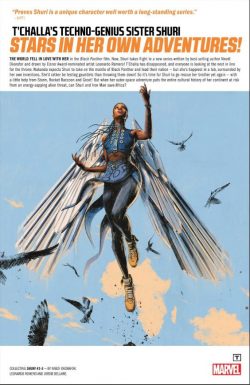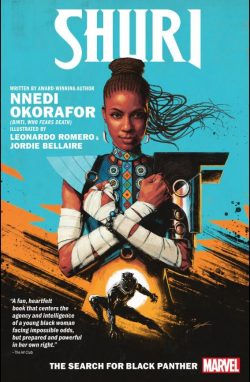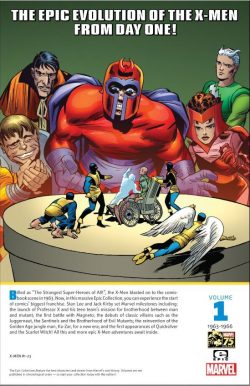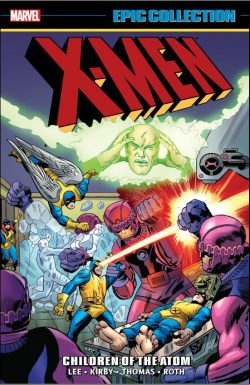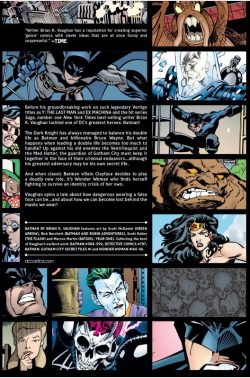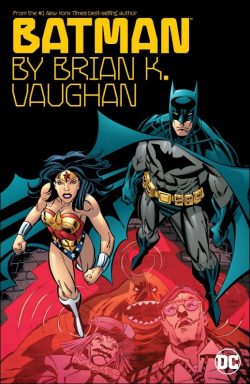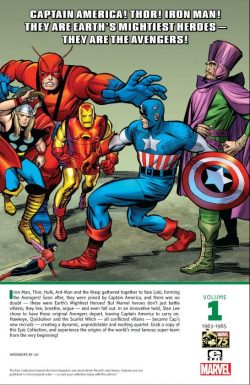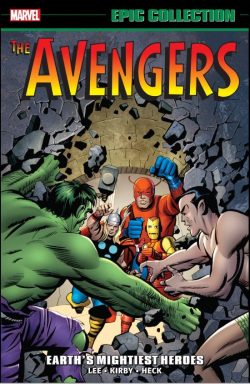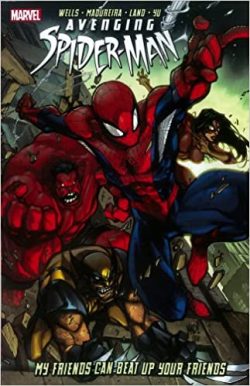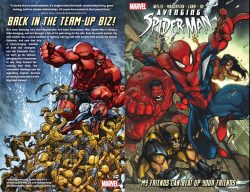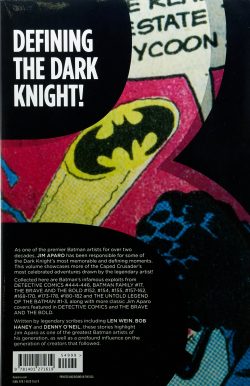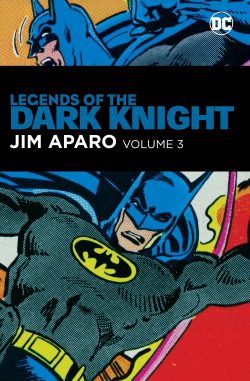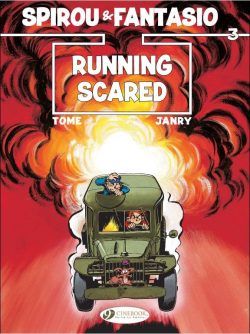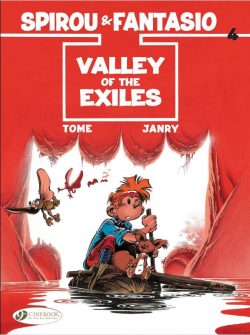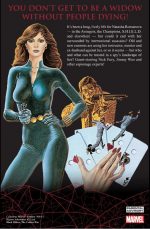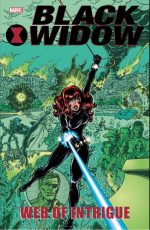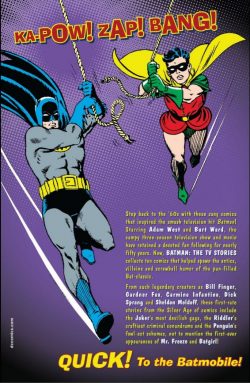
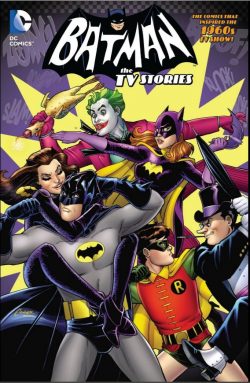
By Bill Finger, David Vern Reed, France Herron, Dave Wood, Gardner Fox, John Broome, Dick Sprang, Lew Sayre Schwartz, Sheldon Moldoff, Charles Paris, Carmine Infantino, Joe Giella, Sid Greene, Bob Kane & various (DC Comics)
ISBN: 978-1-4012-4495-8 (TPB)
Debuting a year after Superman, “The Bat-Man†(and latterly Robin, the Boy Wonder – who celebrates his 80th anniversary this month) cemented National Comics – AKA DC – as the market and genre leader of the nascent comicbook industry and epitome of swashbuckling derring-do. Batman bloomed at this time and the impetus enabled him to endure and survive the decline of superheroes at the end of the 1940s.
By the end of 1963, Julius Schwartz having – either personally or by example – revived and revitalised DC’s costumed champion line-up – and by extension the entire industry – with his modernization of the superhero, was asked to work his magic with the creatively stalled and nigh-moribund Caped Crusaders.
Bringing his usual team of top-notch creators with him, the editor stripped down the core-concept, downplaying all the ETs, outlandish villains and daft transformation tales that had sustained the no-longer dark knight, bringing a cool modern take to the capture of criminals whilst overseeing a streamlining rationalisation of the art style itself.
The most apparent change to us kids was a yellow circle around the Bat-symbol but, far more importantly, the stories also changed. A subtle aura of genuine menace had crept back in…
At the same time, Hollywood was preparing to produce a television series based on the Caped Crusaders and, through the sheer karmic insanity that permeates the universe, the producers were basing their interpretation upon the addictively daft material the publishers had turned their Editorial backs on, not the “New Look Batman†that was enthralling the readers.
The TV show premiered on January 12th 1966 and ran for 3 seasons (120 episodes in total), airing twice weekly for its first two seasons. It was a monumental world-wide hit and sparked a wave of trendy imitation. The resulting media hysteria and fan frenzy generated an insane amount of Bat-awareness, no end of spin-offs and merchandise – including a still-fabulously watchable movie – while introducing us all to the phenomenon of overkill.
“Batmania†exploded across the world and then as almost as quickly became toxic and vanished. To this day, no matter how much we might squeal and foam about it, or what has occurred since in terms of comics, games or movies, to a huge portion of this planet’s population Batman is always going to be that “Zap! Biff! Pow!†costumed buffoon…
And what’s wrong with that?
Still adored by a large portion of the fans – as evidenced by Batman ’66: a splendid recent series of tales crafted in the style of the show – this collection gathers comics stories spanning 1948 and 1966, which inspired episodes of the TV phenomenon. Available in paperback and digitally, the titanic treats are prefaced by ‘Holy —-! (Choose any word that begins with an “Sâ€)’, an Introduction by Bat-movie producer Michael Uslan, adding context before the wonderment commences with ‘The Riddler’ by Bill Finger, Dick Sprang & Charles Paris.
Detective Comics #140, October 1948 revealed how cheating carnival con-man Edward Nigma took an obsession with puzzles to perilous extremes: becoming a costumed criminal to match wits with the brilliant Batman in a contest that threatened to set the entire city ablaze.
From Batman #53 (June/July 1949), ‘A Hairpin, A Hoe, A Hacksaw, A Hole in the Ground’ came courtesy of Finger, Lew Sayre Schwartz, Bob Kane & Paris, detailing how The Joker resolved to prove to the world that he was the greatest clown in history. His research was a big problem for Gotham…
The Harlequin of Hate played an encore in Batman #73 (October/November 1952 as David Vern Reed, Sprang & Paris’ ‘The Joker’s Utility Belt’ saw the Dynamic Duo temporarily stymied when the crime clown devised his own uniquely perverse iteration of the heroes’ greatest weapon and accessory…
‘The Mad Hatter of Gotham City’ – by Finger, Sheldon Moldoff & Paris – debuted in Detective Comics #230 (April 1956): a chapeau-obsessed collector and thief whose greatest ambition is to possess Batman’s cowl, after which Dave Wood, Moldoff & Paris expose ‘The Ice Crimes of Mr. Zero’ (Batman #121, February 1959), wherein a scientist turns to crime after his experiments afflict him with a condition that will kill him if his temperature rises above freezing point. Although cured in this yarn, the villain would return taking the name Mr. Freeze in later appearances…
Skipping ahead to the Schwartz-era, Batman #169 (February 1965) highlights wily, bird-themed bad-man The Penguin who contrives to make the Caped Crusaders his unwilling ‘Partners in Plunder!’ in a crafty caper conceived by France Herron, Moldoff & Joe Giella, before another archfoe resurfaces in ‘The Remarkable Ruse of the Riddler’ by Gardner Fox, Moldoff & Giella.
After an absence of decades, the Prince of Puzzlers returned to bamboozle Batman (#171, May 1965) in a clever book-length mystery which did much to catapult the previously forgotten villain to the first rank of Bat-Baddies.
His main rival had never really gone away but also got an upgrade in (generally harmless) insanity, as typified by ‘The Joker’s Comedy Capers!’ from Detective Comics #341, July 1965. Here John Broome, Carmine Infantino & Giella revealed how envy apparently inspired the Mountebank of Menace to emulate classic cinema comedians in bold crimes. As usual all was not what it seemed and a killer punchline was waiting for all involved…
Broome, Moldoff & Giella then posed ‘Batman’s Inescapable Doom-Trap’ in Detective Comics #346 (December 1965), highlighting the Caped Crimebuster’s escapology skills as a magician-turned-thief alpha-tests his latest stage-stunt on the unwilling, unwitting hero…
The TV series eventually required a new star to boost ratings: a female hero who would become a mainstay of the comics and who stylishly closes this compilation…
A different Batgirl – Betty Kane, teenaged niece of the 1950s Batwoman – was already a nearly-forgotten comics fixture but for reasons far too complex and irrelevant to mention was conveniently ignored to make room for a new, empowered woman in the fresh tradition of Emma Peel, Honey West and the Girl from U.N.C.L.E. She was considered pretty hot too, which was always a plus for television back then…
‘The Million Dollar Debut of Batgirl’ launched a hip and capable new iteration designed to soar in the Swinging Sixties. DC had plenty of notice of her screen launch and took pains to establish her long before the third season began on September 14th 1967.
Cover-dated January 1967 – so actually on sale at the end of 1966 – Detective Comics #359 left the comicbook premiere to Gardner Fox and art team supreme Infantino & Sid Greene, who produced a ripping yarn introducing mousy librarian Barbara Gordon, daughter of the venerable Police Commissioner, into the superhero limelight. Thus, by the time the show aired, she was already well-established among comics fans at least….
The tale itself reveals how secretly capable Babs (a shy, retiring kung fu expert, dressed in a masquerade bat-costume) accidentally foils the kidnapping of Bruce Wayne by deadly extortionist Killer Moth. Whereas her TV analogue fought the Penguin on the small screen, her print origin features the no less ludicrous but at least visually forbidding super-thug in a clever yarn that still stands up today.
Touted as “the comics that inspired the 1960s TV show!†this is a delicious slice of Fights ‘n’ Tights ephemera, free of angst or excess baggage: a comics rollercoaster packed with fun and adventure for all ages and the ideal remedy for the Lockdown Blues.
© 1948, 1949, 1952, 1956, 1959, 1965, 1967, 2013 DC Comics. All Rights Reserved.

